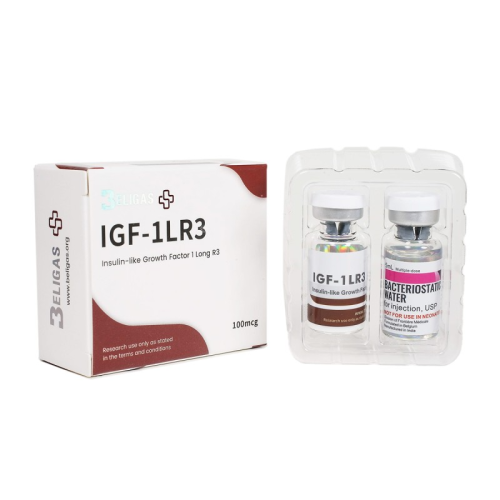CLASSIFICATION
Polypeptide Long-Chain Amino Acid Peptide Hormone
ACNE
No
WATER RETENTION
No
HBR
No
HEPATOTOXICITY
No
AROMATIZATION
No
MANUFACTURER
Beligas
WAREHOUSE
International Warehouse 3
SUBSTANCE
IGF-1 LR3
,
Insulin-like Growth Factor 1 (IGF-1), also referred to as Somatomedin C, is a hormone with a molecular structure similar to insulin. It plays a crucial role in growth during childhood and has anabolic effects in adults.
IGF-1 is one of several growth factors essential for normal human development. It is primarily produced by the liver but is also synthesized in various tissues throughout the body.
This hormone is made up of 70 amino acids and, like insulin, features an A and B chain linked together by disulfide bridges. The C peptide region contains 12 amino acids.
UsageIGF-1 promotes normal growth and development of bones and tissues, while also having the ability to lower blood glucose levels. It targets fat cells, thereby facilitating fat burning, which increases lean body mass and reduces fat. These benefits are particularly sought after by athletes and bodybuilders. Elevated IGF-1 levels can lead to weight gain, but this is primarily due to an increase in lean body mass rather than fat accumulation.
In the bodybuilding community and among regular gym-goers, IGF-1 is valued for its role in enhancing recovery times following workouts and boosting energy levels during exercise.
IGF-1 injections are common for both adults and children suffering from growth hormone deficiencies. This hormone contains many essential amino acids that can assist children who are not growing at an expected rate and can supplement adults who are lacking.
Research indicates that IGF-1's anabolic properties may be linked to reduced protein degradation and increased protein synthesis in skeletal muscle. This could be a direct effect of IGF-1 on muscle tissue, aiding in the healing of burns and other tissue irregularities.
Mechanism of ActionIGF-1 is a naturally occurring hormone in the bloodstream, mainly responsible for mediating the effects of growth hormone within the body. Its normal functions, alongside growth hormone, include facilitating tissue and bone growth. IGF-1 is produced in various tissues as a consequence of growth hormone circulating in the blood.
It promotes comprehensive body growth, exerting growth-stimulating effects on most cells, including those in the bones, cartilage, skeletal muscles, liver, kidneys, nerves, skin, and lungs. Besides its insulin-like effects, IGF-1 can also influence cellular DNA synthesis.
AdministrationIGF-1 is administered via subcutaneous injection into a fleshy area, typically the stomach or abdomen, but it can also be given intramuscularly.
Before using IGF-1, it is important to ensure a clean and sterile syringe is used:
IGF-1 should not be injected more than twice a day, and a typical dosage cycle can last from 2 to 12 weeks.
Children and adults prescribed IGF-1 for developmental deficiencies should consult their healthcare provider for appropriate dosing guidelines.
Side EffectsThe side effects of IGF-1 can resemble those of other growth hormones, such as excessive body tissue growth (acromegaly) and potential damage to the joints, liver, and heart. Possible side effects include joint pain, muscle discomfort, headaches, and nausea. IGF-1 may also lower blood sugar levels, leading to hypoglycemia. Researchers have linked IGF-1 to an increased risk of certain types of cancer, including lung, breast, colorectal, and prostate cancers.
Benefits
